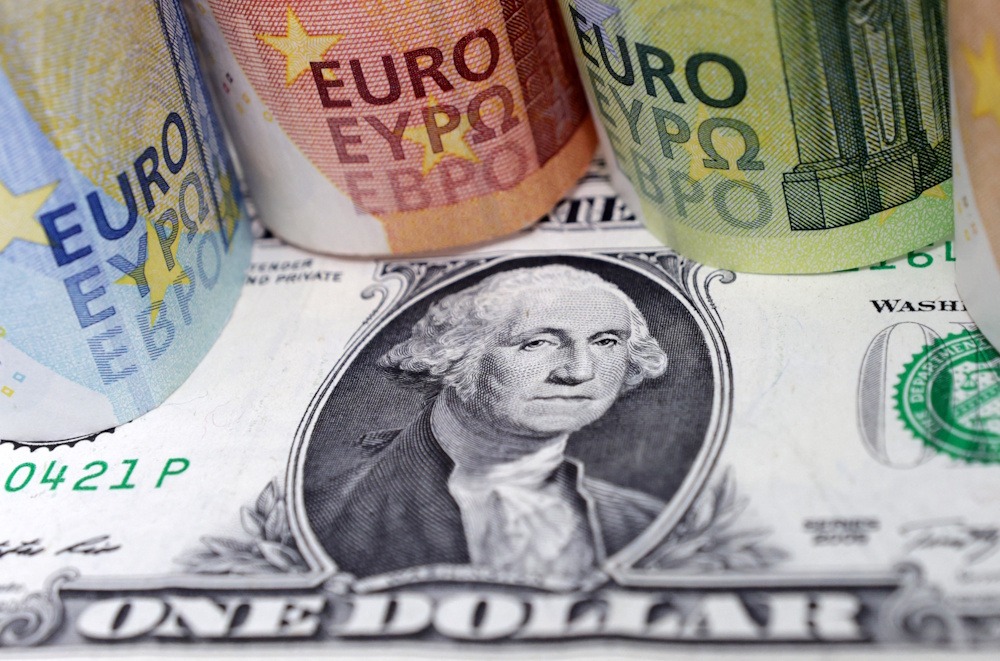The EUR/USD was positioned near the 1.16 level prior to the ECB rate decision, experiencing a slight rebound after the Fed’s somewhat hawkish press conference yesterday, during which Powell emphasized that another cut is not assured. However, risk appetite continues to be largely supported, despite a slight pullback in European markets this morning ahead of the upcoming European Central Bank rate decision. US President Donald Trump described his meeting with China’s President Xi Jinping as “amazing.” Both parties reached an agreement to roll back certain export restrictions and trade barriers. However, the markets had largely anticipated this outcome, which explains the lack of significant reaction. The emphasis continues to be on AI enthusiasm and technology earnings, which is helping to keep bearish sentiments at a distance in the stock markets. This is providing support against the downside risks for the EUR/USD forecast and other risk-sensitive currency pairs like AUD/USD. The ECB is anticipated to maintain its current policy stance, and therefore, we do not foresee any dovish response in the euro, particularly following the unexpectedly robust French GDP data.
Given the ECB’s expected stability today and the resilience of eurozone growth, the single currency is well-supported, particularly against the yen. The EUR/JPY has reached a new high near the 179.00 level following a dovish stance from the Bank of Japan, positioning the EJ as the top-performing currency pair. The euro remains resilient against the majority of other major currencies; it is primarily the dollar’s prevailing strength that is restraining its performance. In the medium term, I would continue to support the EUR/USD. A more hawkish ECB, stronger growth prospects, and German stimulus are expected to provide substantial support. The short-term outlook, however, will hinge on the duration of the Fed’s hawkish afterglow. Once that fades, EUR/USD may have the potential to rise once more. From my perspective, I don’t anticipate it dropping significantly below 1.15 – and if it does, I expect it to rebound quickly.
Powell’s press conference highlighted a significant point – there appears to be some discord developing within the Fed. The indication of internal division provided support for the dollar, leading markets to adjust anticipated rate cuts downward by approximately 10 basis points. The dollar strengthened significantly against the low-yielding yen and Swiss franc. Powell indicated that a December cut isn’t a “foregone conclusion,” a statement that should not have caught the market off guard. However, it did occur, resulting in a shift of probabilities from nearly certain to a more balanced 70% for a December cut. The dollar gained support, especially against the yen, as the Bank of Japan appears hesitant to implement tightening measures. Meanwhile, China’s one-year delay in rare earth export controls provided global supply chains with a much-needed reprieve. However, the implications for the dollar are expected to be unfavorable, particularly in relation to the yuan, Aussie, and kiwi. In addition to today’s jobless claims, the current US government shutdown has resulted in a limited data calendar. Consequently, markets are likely to derive their direction from overall risk appetite as the implications of the FOMC’s rate cut and Powell’s somewhat hawkish remarks become clearer.
The EUR/USD forecast now directs attention towards the euro aspect. This morning’s Eurozone growth figures presented an unexpected positive development, particularly from France. In the face of political uncertainty, French GDP demonstrated a robust acceleration of 0.5% quarter-on-quarter, significantly exceeding expectations. The disparity with Germany, however, is quite pronounced. Europe’s industrial powerhouse stagnated in Q3, yet a technical recession was narrowly averted. The future of Berlin now hinges on the government’s substantial €500 billion fiscal package, which is focused on infrastructure and defence initiatives. The magnitude is considerable, yet the effects may take longer to materialize than anticipated. Excluding Germany, the majority of Eurozone nations demonstrated respectable growth metrics. The Eurozone achieved a growth rate of 0.2% for the quarter. The focus is now directed towards the upcoming European Central Bank meeting. Christine Lagarde is not expected to introduce any unexpected developments; the market currently shows a slight preference for another rate cut around mid-2026. However, for the time being, she is likely to adopt a cautious approach, which should contribute to a modestly positive outlook for the EUR/USD forecast, even in light of the dollar’s recovery.

